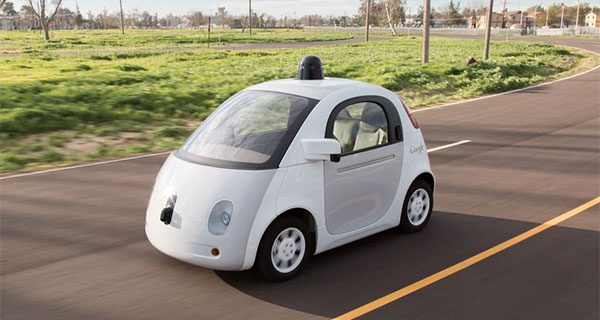Two self-driving prototype vehicles, one operated by Google and the other operated by Delphi Automotive, earlier this week avoided a collision in Palo Alto, California. Neither car touched the other, but the incident spurred a number of rattled headlines over the so-called “near miss.”
In actuality, both vehicles responded as they were supposed to, the companies said in response to the media brouhaha.
The incident occurred on Tuesday when John Absemeier, director of Delphi Automotive’s Silicon Valley lab, was a passenger in his company’s Audi Q5 as it drove along San Antonio Road. The Delphi autonomous car began to change lanes when a Google self-driving Lexus SUV began to move into the same lane.
The Delphi-controlled Audi Q5 responded quickly once it detected that the lane was no longer open, and it terminated the lane change until the road ahead was clear. This type of vehicular conflict is common among human-driven cars and often results in fender benders or more serious accidents; however, in the case of Tuesday’s incident, the vehicles responded appropriately to the situation, and an accident was avoided.
Much Ado About Nothing
That’s not the way the incident has been reported in a slew of articles published Friday.
Many suggest that the “near collision” raises concerns about the safety of autonomous vehicle technology, and some fret over the fact that Google’s self-driving vehicles soon will be tooling down the streets of Silicon Valley.
However, both companies involved in the episode insist this is a case of media hype and little else.
“Any accounts that the cars ‘almost collided’ simply aren’t correct,” said Google spokesperson Courtney Hohne.
“This was an everyday driving scenario that both cars handled as they should have,” she told TechNewsWorld.
“In this case, it was a lane change maneuver where both cars began their execution at the same time,” added Delphi Automotive spokesperson Kristen L. Kinley.
“The vehicles did not come within a lane width of each other, and the Google car did not ‘cut us off,'” Kinley told TechNewsWorld. “Both vehicles did exactly what they were supposed to do.”
Expected Response
Rather than an example of what can go wrong with self-driving cars, Tuesday’s occurrence demonstrates how self-driving cars can avoid accidents by reacting quickly to avoid common human errors, both companies said.
The Delphi car “leverages complex software algorithms to assess its situation — much like a human driver would — to avoid going into a lane if another car decides to move over at the same time,” said Delphi’s Kinley.
“Timing a merge or making a lane change is a common scenario a human driver would encounter, and one where experience and intuition plays a major role — such as speed up or slow down to find an opening,” she pointed out.
“This is unlike automated vehicles which need to work through a decision via a highly complex network of technology and data processing to calculate the correct move,” Kinley explained. “Our car did exactly what it was supposed to. Our car saw the Google car move into the same lane as our car was planning to move into, but upon detecting that the lane was no longer open, it decided to terminate the move and wait until it was clear again.”
Overreactions Abound
The “story” behind the fact that an accident was avoided is simply that the self-driving technology performed as expected.
“The subject has so much news value that anything that gets attention is written up,” Egil Juliussen, director of research and principal analyst at IHS Automotive Technology, told TechNewsWorld.
“If a driver controlling the vehicle had started the same lane change, it could have easily resulted in an accident — and that is not an uncommon occurrence with human drivers,” noted Jeremy Carlson, senior analyst for autonomous driving at IHS.
“What we are seeing is that there is so much interest in what is going on with self-driving cars that anything that is close to news is going to get blown up,” he told TechNewsWorld. “The media has taken this out of context.”
Real-World Situations
Autonomous cars likely will be subject to many more years of testing before they become widespread, and those watching from the sidelines should expect more “incidents” down the road.
“This is the objective of road testing,” said Praveen Chandrasekar, automotive and transportation research manager at Frost & Sullivan.
“The point of the automated car is to take the human equation out of the loop, but we must remember that currently, per California law, there were people inside each vehicle, ready to take control,” Chandrasekar added. “There is still a lot left to test — such as how these cars will react to dumb cars that don’t have this technology — but it is clear from this non-incident that this is how the testing should proceed.”






















































